The yellow-green vireo (Vireo flavoviridis) is a small American passerine bird. It is migratory breeding from Mexico to Panama and wintering in the northern and eastern Andes and the western Amazon Basin.
Taxonomy
The yellow-green vireo was formally described by the American ornithologist John Cassin in 1851 under the binomial name Vireosylvia flavoviridis.[2] The specific epithet combines the Latin flavus meaning "yellow" and viridis meaning "green".[3] The type locality is San Juan de Nicaragua.[4][5] The yellow-green vireo is now placed in the genus Vireo that was introduced in 1808 by the French ornithologist Louis Pierre Vieillot.[6][7]
Five subspecies are recognised:[7]
- V. f. hypoleucus Van Rossem & Hachisuka, 1937 – northwest Mexico (southeast Sonora to south Sinaloa)
- V. f. flavoviridis (Cassin, 1851) – north central, northeast Mexico to Panama
- V. f. forreri Madarász, 1885 – Islas Marías (off west Mexico)
- V. f. perplexus (Phillips, AR, 1991) – north Guatemala
- V. f. vanrossemi (Phillips, AR, 1991) – southeast El Salvador
Description
The adult yellow-green vireo is 14–14.7 cm in length and weighs 18.5 g. It has olive-green upperparts and a dusky-edged gray crown. There is a dark line from the bill to the red-brown eyes, and a white supercilium. The underparts are white with yellow breast sides and flanks. Young birds are duller with brown eyes, a brown tint to the back, and less yellow on the underparts. The adult yellow-green vireo differs from the red-eyed vireo in its much yellower underparts, lack of a black border to the duller gray crown, yellower upperparts and different eye color.
Some individuals are difficult to separate, even in the hand, from the similar red-eyed vireo, with which it is sometimes considered conspecific. Its exact status as a passage bird in countries such as Venezuela is therefore uncertain.
The yellow-green vireo has a nasal nyaaah call, and the song is a repetitive veree veer viree, fee’er vireo viree, shorter and faster than that of the red-eyed vireo. This species rarely sings on its wintering grounds.
Distribution and habitat
It breeds from southern Texas (occasionally the Rio Grande Valley) in the United States and the western and eastern mountain ranges of northern Mexico (the Sierra Madre Occidental and Sierra Madre Oriental—also the Cordillera Neovolcanica) south to central Panama. It is migratory, wintering in the northern and eastern Andes and the western Amazon basin. This vireo occurs in the canopy and middle levels of light woodland, the edges of forest, and gardens at altitudes from sea level to 1500 m.
Behaviour and ecology
Breeding
The 6.5-cm-wide cup nest is built by the female from a wide range of plant materials, and attached to a stout twig normally 1.5–3.5 m above the ground in a tree, but occasionally up to 12 m high. The normal clutch is two or three brown-marked white eggs laid from March to June and incubated by the female alone, although the male helps to feed the chicks. The breeding birds return to Central America from early February to March, and most depart southwards by mid-October.
Feeding
Yellow-green vireos feed on insects gleaned from tree foliage, favoring caterpillars and beetles. They also eat small fruits, including mistletoe berries, and, in winter quarters, those of Cymbopetalum mayanum (Annonaceae) and gumbo-limbo (Bursera simaruba).[8]
Gallery
-
Panama
References
- ^ BirdLife International (2018). "Vireo flavoviridis". IUCN Red List of Threatened Species. 2018: e.T22705248A130373893. doi:10.2305/IUCN.UK.2018-2.RLTS.T22705248A130373893.en. Retrieved 12 November 2021.
- ^ Cassin, John (1851). "Sketch of the birds composing the genera Vireo Vieillot and Vireosylvia, Bonaparte, with a list of the previously known and descriptions of three new species". Proceedings of the Academy of Natural Sciences of Philadelphia. 5: 149–154 [152].
- ^ Jobling, James A. (2010). The Helm Dictionary of Scientific Bird Names. London: Christopher Helm. p. 162. ISBN 978-1-4081-2501-4.
- ^ Zimmer, John Todd (1941). Studies of Peruvian birds. No. 39, The genus Vireo. American Museum novitates: No. 1127. p. 2.
- ^ Paynter, Raymond A. Jr, ed. (1968). Check-List of Birds of the World. Vol. 14. Cambridge, Massachusetts: Museum of Comparative Zoology. p. 123.
- ^ Vieillot, Louis Pierre (1808). Histoire naturelle des oiseaux de l'Amérique Septentrionale : contenant un grand nombre d'espèces décrites ou figurées pour la première fois (in French). Vol. 1. Paris: Chez Desray. p. 83. The title page bears a date of 1807 but the volume did not appear until the following year.
- ^ a b Gill, Frank; Donsker, David; Rasmussen, Pamela, eds. (2020). "Shrikes, vireos, shrike-babblers". IOC World Bird List Version 10.1. International Ornithologists' Union. Retrieved 16 April 2020.
- ^ Foster (2007)
Further reading
- Skutch, Alexander F. (1960). "Yellow-green vireo" (PDF). Life Histories of Central American Birds II. Pacific Coast Avifauna, Number 34. Berkeley, California: Cooper Ornithological Society. pp. 11–28.
External links
- Xeno-canto: audio recordings of the yellow-green vireo
- Photo; Article CBRC Rare Bird Photos, California Bird Records Committee
- Photo-2 CBRC Rare Bird Photos Article
- Yellow-green Vireo photo gallery VIREO-Visual Resources for Ornithology Photo-High Res--(Close-up)
- Yellow-green Vireo photo; Article "Avifauna of Eco-Region, Sierra Nevada de Santa Marta, Colombia"
|
Help
|
|
Browse
|
Search
|
Create the page "Yellow-green Vireo" on this wiki!
 DescriptionYellow-green Vireo - Carara - Costa Rica S4E0062 (26670622936).jpg Yellow-green Vireo - Carara - Costa Rica_S4E0062 Date 24 March 2016, 15:54...(1,140 × 760 (284 KB)) - 09:21, 13 May 2023
DescriptionYellow-green Vireo - Carara - Costa Rica S4E0062 (26670622936).jpg Yellow-green Vireo - Carara - Costa Rica_S4E0062 Date 24 March 2016, 15:54...(1,140 × 760 (284 KB)) - 09:21, 13 May 2023 File:A catalogue of the birds of the West Indies - which do not occur elsewhere in North America north of Mexico (IA catalogueofbirds00maynrich).pdf (matches file content)Vireo. Cuba. 231 VIREO CRASSIROSTRIS (Bryant.). Bahama Vireo. Bahamas. 232 VIREO CRASSIROSTRIS FLAVESCENS Ridgw. Yellow-green Vireo. Rum Cay, Conception...(829 × 1,302 (9.69 MB)) - 08:28, 28 June 2023
File:A catalogue of the birds of the West Indies - which do not occur elsewhere in North America north of Mexico (IA catalogueofbirds00maynrich).pdf (matches file content)Vireo. Cuba. 231 VIREO CRASSIROSTRIS (Bryant.). Bahama Vireo. Bahamas. 232 VIREO CRASSIROSTRIS FLAVESCENS Ridgw. Yellow-green Vireo. Rum Cay, Conception...(829 × 1,302 (9.69 MB)) - 08:28, 28 June 2023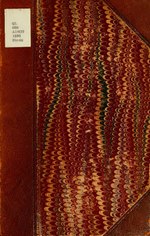 File:A catalogue of the birds of the West Indies - which do not occur elsewhere in North America north of Mexico (IA catalogueofbirds00mayn).pdf (matches file content)Vireo. Cuba. 231 VIREO CRASSIROSTRIS (Bryant.). Bahama Vireo. Bahamas. 232 VIREO CRASSIROSTRIS FLAVESCENS Ridgw. Yellow-green Vireo. Rum Cay, Conception...(700 × 1,102 (2.85 MB)) - 08:28, 28 June 2023
File:A catalogue of the birds of the West Indies - which do not occur elsewhere in North America north of Mexico (IA catalogueofbirds00mayn).pdf (matches file content)Vireo. Cuba. 231 VIREO CRASSIROSTRIS (Bryant.). Bahama Vireo. Bahamas. 232 VIREO CRASSIROSTRIS FLAVESCENS Ridgw. Yellow-green Vireo. Rum Cay, Conception...(700 × 1,102 (2.85 MB)) - 08:28, 28 June 2023 File:Nomenclature of North American birds chiefly contained in the United States National Museum (IA cu31924000056964).pdf (matches file content)(Cass.) ElDGW. Red-eyed Vireo. [240.] Yellow-green Vireo. 137. [241.] VEREOSYLVIA CALIDRIS BARBATULA Black-whiskered Vireo. M38. VIREOSYLVIA PHILADELPHICA...(733 × 1,247 (3.06 MB)) - 10:47, 26 April 2024
File:Nomenclature of North American birds chiefly contained in the United States National Museum (IA cu31924000056964).pdf (matches file content)(Cass.) ElDGW. Red-eyed Vireo. [240.] Yellow-green Vireo. 137. [241.] VEREOSYLVIA CALIDRIS BARBATULA Black-whiskered Vireo. M38. VIREOSYLVIA PHILADELPHICA...(733 × 1,247 (3.06 MB)) - 10:47, 26 April 2024 File:Books from the Biodiversity Heritage Library (IA birdsNorthAmeri00).pdf (matches file content)Black-whiskered Vireo. 623 Red-eyed Vireo 624 Yellow-green Vireo 625 Philadelphia Vireo 626 Warbling Vireo 627 Swainson's Vireo 627^ Yellow-throated Vireo. 628 Blue-headed...(1,533 × 1,893 (81.05 MB)) - 20:30, 6 December 2023
File:Books from the Biodiversity Heritage Library (IA birdsNorthAmeri00).pdf (matches file content)Black-whiskered Vireo. 623 Red-eyed Vireo 624 Yellow-green Vireo 625 Philadelphia Vireo 626 Warbling Vireo 627 Swainson's Vireo 627^ Yellow-throated Vireo. 628 Blue-headed...(1,533 × 1,893 (81.05 MB)) - 20:30, 6 December 2023 File:Bulletin - United States National Museum (IA bulletinunitedst221881unit).pdf (matches file content)OLIVACEA (Linn.) Bonap. Red-eyed Vireo. 136. [240.] VIREOSYLVIA AGILIS FLAVO-VIRIDIS (Cass.) EidGW. Yellow-green Vireo. 137. [241.] VIREOSYLVIA CALIDRIS...(731 × 1,233 (5.26 MB)) - 07:13, 2 January 2024
File:Bulletin - United States National Museum (IA bulletinunitedst221881unit).pdf (matches file content)OLIVACEA (Linn.) Bonap. Red-eyed Vireo. 136. [240.] VIREOSYLVIA AGILIS FLAVO-VIRIDIS (Cass.) EidGW. Yellow-green Vireo. 137. [241.] VIREOSYLVIA CALIDRIS...(731 × 1,233 (5.26 MB)) - 07:13, 2 January 2024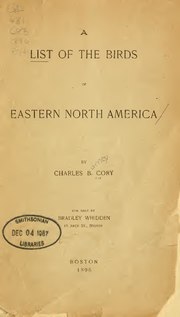 File:A list of the birds of eastern North America (IA listofbirdsofeas00cory).pdf (matches file content)Yellow-green Vireo. Mexican L^---472 (626) species, once recorded from Province of Quebec. VIREO PHILADELPHICUS (Cass.). Philadelphia Vireo. ...(720 × 1,270 (2.02 MB)) - 00:25, 3 May 2024
File:A list of the birds of eastern North America (IA listofbirdsofeas00cory).pdf (matches file content)Yellow-green Vireo. Mexican L^---472 (626) species, once recorded from Province of Quebec. VIREO PHILADELPHICUS (Cass.). Philadelphia Vireo. ...(720 × 1,270 (2.02 MB)) - 00:25, 3 May 2024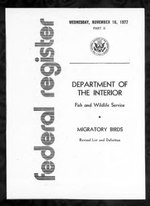 File:Federal Register 1977-11-16- Vol 42 Iss 221 (IA sim federal-register-find 1977-11-16 42 221 0).pdf (matches file content)Rican Vireo latimeri. Red-eyed Vtrco olivaceus. Solita^ Vtrco solitarius. Warbling Vtrco gilvus. White-eyed Vtrco griseus. Yellow-green Vireo flavoviridis...(1,220 × 1,679 (670 KB)) - 04:13, 19 February 2023
File:Federal Register 1977-11-16- Vol 42 Iss 221 (IA sim federal-register-find 1977-11-16 42 221 0).pdf (matches file content)Rican Vireo latimeri. Red-eyed Vtrco olivaceus. Solita^ Vtrco solitarius. Warbling Vtrco gilvus. White-eyed Vtrco griseus. Yellow-green Vireo flavoviridis...(1,220 × 1,679 (670 KB)) - 04:13, 19 February 2023


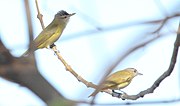

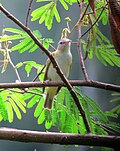



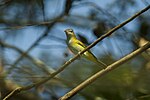



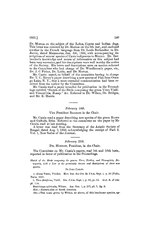


Recent Comments